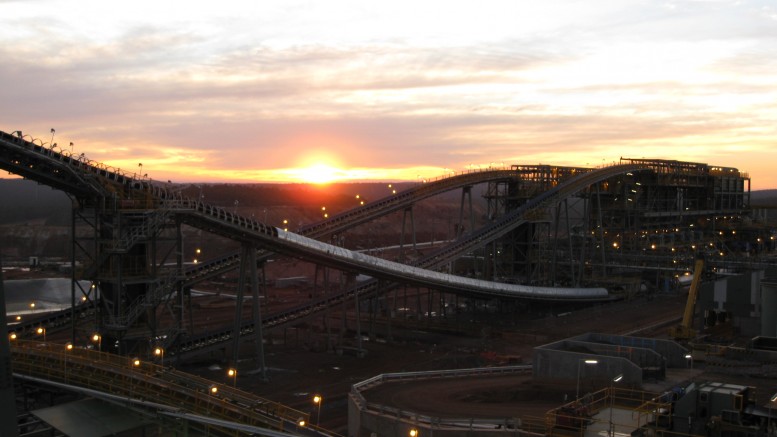While the European debt crisis and all-time record-high gold prices above US$1,240 per oz. have grabbed the biggest headlines lately, the ordinary talk amongst miners continues to be the shocking new tax regime being proposed in Australia, which would turn the mining powerhouse into one of the world’s highest-taxed mining jurisdictions.
With its Resource Super Profits Tax, the Kevin Rudd-led Labor government is aiming to impose a 40% tax on windfall profits from all mines operating in Australia, beginning in July 2012.
The bar is set low as to what would be a windfall profit: anything above the yield on a 10-year Australian government bond, or about 5.8% these days. And this is all on top of miners’ regular corporate taxes, royalties and fees, which already total around A$21 billion per year.
The new tax would rope in an extra A$5-6 billion per year initially, and Rudd promises to guide the funds into pensions and infrastructure projects.
With the federal government now running annual deficits around A$60 billion, imposing the new tax is seen as a key step in returning to balanced budgets within a few years.
The proposed tax has thus become a major plank in Rudd’s re-election bid, with a federal election perhaps happening in October.
Recent polling has shown the Labor party with a slight advantage over the Tony Abbott-led small-c conservative Liberal party.
Rudd has personally lost popularity with Labor supporters in past weeks for scrapping the idea of a new carbon cap-and-tax regime, after having memorably described global warming as “the great moral challenge of our generation.”
With the carbon cap-and-tax system and its substantial tax revenues off the table, there’s all the more reason politically for Rudd to stiffen his rumoured backbone and face down miners on this windfall tax.
While the economics and fairness of the windfall tax may be dubious, the political optics are great for Rudd and Labor in this fight: on one side the distant, multinational “profiteer” mining companies and the blustery and slightly absurd Aussie billionaire mining promoters Andrew Forrest and Clive Palmer, and on the other side the “caring” and “far-sighted” Rudd and the Labor party bravely standing up to protect millions of vulnerable Australian pensioners, present and future.
Indeed, specific polling on support for the windfall tax splits right down party lines, with very strong support from Labor voters and very strong disapproval from Liberal voters, again with a slight edge for Labor.
The hardest-hit mining companies are the three with the biggest mines in Australia: BHP Billiton, Rio Tinto and Xstrata. They may be poneying up an extra A$4 billion annually in taxes between them, and the future of their ambitious expansion plans in Australia is now in doubt.
(Funny how the simple truth that bigger companies make bigger targets for tax-hungry governments was one of the glaring negatives left out of the selling job when these three were cobbled together into mining behemoths a few years ago.)
While the “big three” are helping lead the fight against the new tax (Xstrata, for instance, went out of its way to announce it was suspending exploration in northern Queensland), there is a real danger they will come across to the Australian public as bullies and harden support for the new tax.
There are big losers from North America, too, each with substantial operating assets in Australia: Barrick Gold, with about 1.5 million oz. of annual gold production from Oz, or about 20% of its total; Newmont Mining, with a similar 20%; Peabody Energy, with 10 coal mines; and Cliffs Natural Resources, with iron ore and coal mines.
Lower down the loser totem pole are Northgate Minerals, NewGold, Coeur d’Alene Mines, First Quantum Minerals and Cameco.
Brazil’s Vale tops the list of mining-company winners, with its vast portfolio of non-Australian iron ore and nickel assets. It may, in years to come, now be able to leap over BHP Billiton and become the world’s biggest miner by market capitalization.
Winners on Canadian soil include the West Coast coal exporters Teck Resources and Sherritt International, and the largest East Coast iron ore miners: Iron Ore Company of Canada, which just announced it’s going ahead with a US$400-million expansion; ArcellorMittal Canada; and Cliffs.
Also standing to benefit are the Labrador Trough’s emerging iron ore producers Consolidated Thompson Iron Mines and Labrador Iron Mines.
Perhaps the biggest boost will be for the earlier-stage developers in the Trough and in Nunavut: New Millennium Capital, Baffinland Iron Mines, Adriana Resources, Advanced Explorations and Champion Minerals, whose dauntingly remote but high-quality projects now look a lot more attractive to develop.


Be the first to comment on "Editorial: Aussie tax showdown"